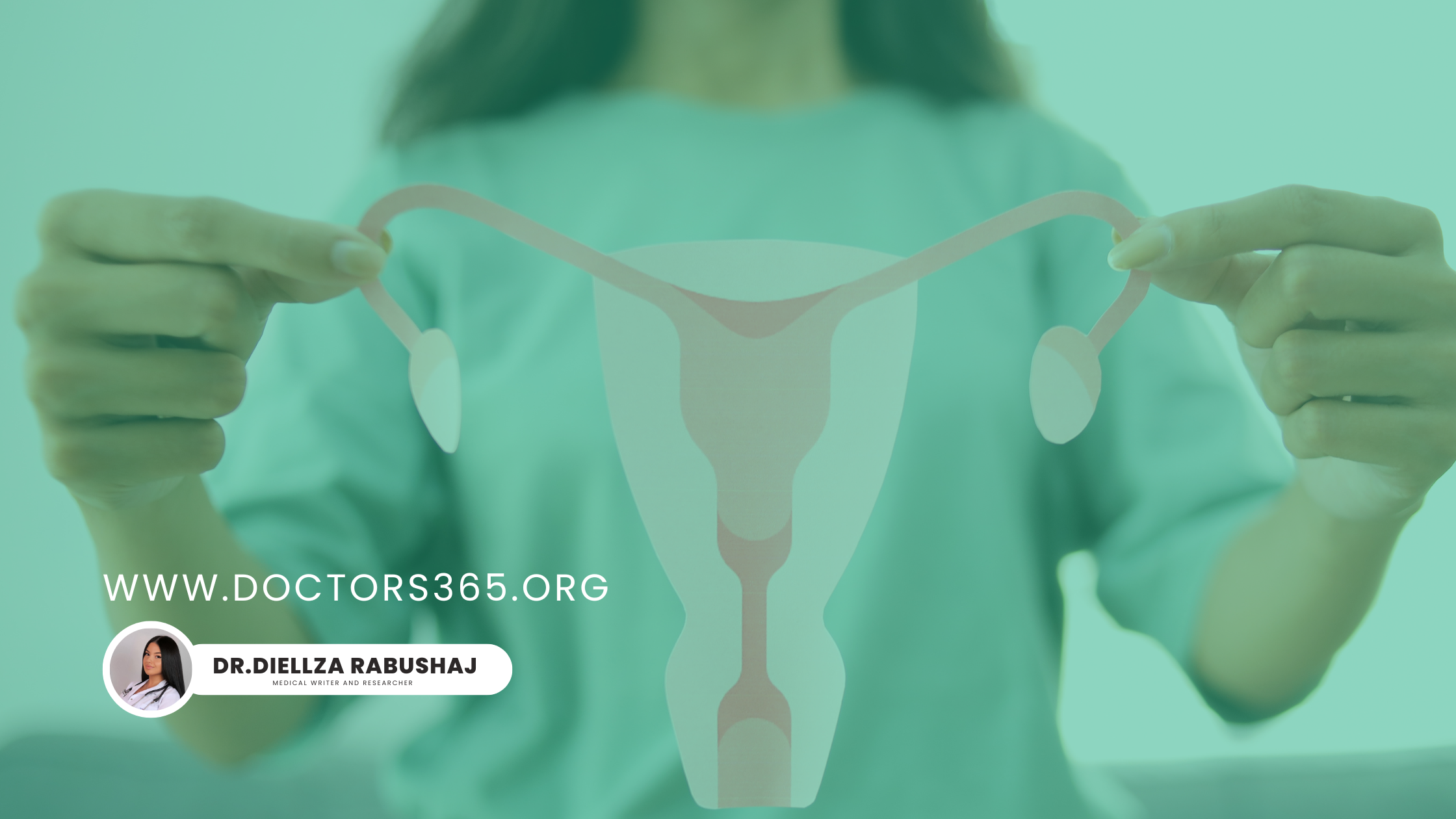
Gynecology & Women’s Health
Perimenopause—Clear Answers, Real Relief
Perimenopause explained: symptoms, treatments, and secure online care with Doctors365 specialists.
Perimenopause can bring hot flushes, irregular periods, sleep disturbance, mood changes, and genitourinary symptoms. You don’t have to wait it out. Doctors365 connects you to verified gynaecology, endocrinology, and women’s-health experts who apply internationally appraised guidelines and consensus recommendations to personalize care. Together, you’ll explore lifestyle strategies, non-hormonal medications for vasomotor symptoms, and menopausal hormone therapy when appropriate, plus targeted treatments for genitourinary syndrome of menopause. Our encrypted video visits are convenient and designed for continuity—with safety-netting and in-person referrals when needed. Regain control and feel more like yourself—book your consultation today.
Educational disclaimer: This article is for educational purposes only and is not a substitute for personal medical advice, diagnosis, treatment, or emergency care. If you have severe symptoms (e.g., heavy bleeding with dizziness, chest pain, shortness of breath, sudden neurological changes), call your local emergency number immediately.
Author: Dr. Diellza Rabushaj
Perimenopause—the transition leading to menopause—can disrupt sleep, mood, periods, and intimacy. The upside? High-quality guidelines and contemporary research provide clear options that we can deliver safely via telemedicine with in-person backup when needed [2–5,7,8].
2. What is perimenopause? (clinical definition & stages)
Perimenopause is the stage before menopause characterized by fluctuating ovarian hormones (estrogen, progesterone). Clinically, it’s commonly divided into:
- Early perimenopause: increasing cycle variability (usually by ≥7 days).
- Late perimenopause: episodes of ≥60 days without bleeding.
- Menopause: diagnosed retrospectively after 12 consecutive months of amenorrhoea.
Diagnosis is usually clinical—based on history, menstrual pattern, and symptoms—rather than routine hormone testing in otherwise healthy individuals [3–5]. Understanding your stage helps tailor treatment for vasomotor symptoms (VMS), bleeding control, mood, sleep, and urogenital concerns [2–5].
3. How common is it—and why it matters
Recent US data show perimenopausal symptoms are common and often drive healthcare seeking when quality of life is affected (e.g., sleep loss, daytime fatigue, mood changes) [1]. Systematic appraisal of menopause guidelines underscores the need for accessible education and clear pathways to care, including telemedicine models with safety-netting [2,7,8].
4. Key symptoms: what you may feel (and why)
Hormonal variability affects thermoregulation, the endometrium, neurotransmitters, sleep architecture, and urogenital tissues—explaining diverse symptom patterns across the transition [3–5].
4.1 Vasomotor symptoms (VMS)
Hot flushes and night sweats are hallmark features that frequently disrupt sleep and daytime function [1–3].
4.2 Menstrual changes
Cycles can shorten or lengthen; flow may become heavier or lighter; unpredictable bleeding is more common in late perimenopause [3–5].
4.3 Sleep disturbance & fatigue
Sleep fragmentation often tracks with VMS and can be compounded by stress or mood symptoms; targeted sleep and symptom management helps [1–3].
4.4 Mood & cognitive symptoms
New or worsening anxiety/depression and “brain fog” can occur; proactive screening and stepped care improve outcomes [2,6].
4.5 Genitourinary syndrome of menopause (GSM)
Vaginal dryness, dyspareunia, urinary urgency, and recurrent symptoms reflect hypoestrogenic changes and respond well to local therapy when indicated [3–5].
4.6 Sexual function & musculoskeletal changes
Hormonal shifts can influence desire and comfort; joint aches and body-composition changes are reported and often improve with exercise and individualized care [2–5].
5. When to seek care (and what to expect)
Reach out if symptoms are moderate–severe, impair sleep/work/relationships, or raise safety concerns (e.g., heavy/prolonged bleeding, intermenstrual or postcoital bleeding). Clinicians will review your history, menstrual pattern, risks, and preferences to share a plan; investigations are tailored (e.g., bleeding evaluation, cardiovascular risk review) [2–5].
6. How Doctors365 works (simple 5-step flow)
- Browse our verified specialists.
- Pick a time that fits your schedule.
- Confirm & pay securely online.
- Join your encrypted video visit on any device.
- Receive your visit summary, e-prescriptions, and next steps (including labs or referral if needed).
Start here:
- Gynaecology → /doctors/gynecology/all/
- Endocrinology → /doctors/endocrinology/all/
- Family Medicine → /doctors/family-medicine/all/
7. Benefits of online perimenopause care
- 24/7 access & flexibility: Appointments outside office hours; fast follow-ups.
- Privacy & comfort: Discuss sensitive topics without waiting rooms.
- Convenience & lower indirect costs: Save time and travel.
- Continuity: Ongoing monitoring and timely dose or therapy adjustments.
Guidelines emphasize education, shared decision-making, and practical implementation—all well supported by telemedicine with robust safety-netting [2,7,8].
8. Quality & trust at Doctors365
We follow evidence-based guidance from critically appraised menopause guidelines (including S3 short versions) and consensus statements. Our platform uses encrypted video and safeguarded records, with clinical governance for prescribing and follow-up. Education and implementation quality are central to reliable care delivery [2,4,5,7,8].
9. Evidence-based management options
9.1 Lifestyle & self-management
- Sleep strategies/CBT-I principles: consistent schedule, cool room, stimulus control; addressing VMS in parallel improves sleep [2–5].
- Physical activity: aerobic + resistance training supports mood, sleep, weight, and metabolic health [2–5].
- Weight & alcohol moderation: reduces VMS triggers and optimizes health risks [2–5].
- Pelvic health: lubricants, moisturizers, and pelvic-floor exercises relieve GSM; add local therapy when indicated [3–5].
9.2 Non-hormonal pharmacologic options for VMS
For those who prefer to avoid or cannot use MHT, options include SSRIs/SNRIs (e.g., escitalopram, venlafaxine), gabapentin, and clonidine. These reduce VMS frequency/severity in selected patients; counsel on side effects, interactions, and comorbidities [2–5].
9.3 Menopausal hormone therapy (MHT) in perimenopause
Consider MHT for moderate–severe symptoms when benefits outweigh risks:
- Endometrial protection: If you have a uterus, pair estrogen with a progestogen [3–5].
- Route selection: Transdermal estradiol may differ from oral routes regarding VTE risk and triglycerides; individualize to risks and preferences [2–5].
- Cycle control: In perimenopause, cyclical progestogen or combined hormonal contraception can treat symptoms and stabilize bleeding [3–5].
- Annual review: Reassess age, time since last period, and personal/family history (CVD, VTE, breast cancer) at least yearly [2–5].
9.4 Contraception during the transition
Ovulation can persist. Use effective contraception until 12 months after the final period (or per method-specific guidance/age). Options include levonorgestrel IUS, progestogen-only methods, or combined hormonal contraception (often helping symptoms and cycle control) [3–5].
9.5 Treating GSM (local options)
- First-line: routine vaginal moisturizers and lubricants.
- Local estrogen: low-dose vaginal estrogen (tablet, ring, cream) is effective with minimal systemic absorption for persistent symptoms.
- Other option: vaginal DHEA in selected cases.
Care is individualized with ongoing review of benefits and tolerability [3–5].
9.6 Complementary approaches—what the evidence says
Evidence quality for many complementary therapies varies; guidelines recommend prioritizing interventions with the best benefit–risk profile and using complementary options adjunctively after discussing expectations and safety [2–5].
10. Mental health in perimenopause (screening & stepped care)
Obstetrician-gynecologists report variable approaches to screening and managing depression during perimenopause; strengthening routine screening and clear referral pathways improves care [6]. Practical steps:
- Screen when sleep disturbance, VMS, or mood changes are present (e.g., PHQ-2/PHQ-9; GAD-2/GAD-7).
- Stepped care: psychoeducation, CBT, lifestyle measures, and pharmacotherapy when indicated.
- Dual-benefit options: SSRIs/SNRIs may address both VMS and mood in suitable patients; review interactions and comorbidities.
- Escalate urgently for suicidality, severe functional decline, or psychotic symptoms.
11. Online vs in-person: what’s appropriate; red flags
Appropriate for online care (with in-person backup as needed):
- Comprehensive symptom assessment, education, and shared decision-making.
- Initiating/adjusting non-hormonal therapy.
- Local vaginal therapy initiation and follow-up.
- MHT counseling and prescribing where protocols are met (baseline vitals/labs may be required).
- Mental health screening, counseling, and medication follow-up.
Red flags requiring urgent in-person or emergency care:
- Heavy vaginal bleeding with clots, soaking pads hourly, or dizziness/syncope.
- Postmenopausal bleeding (≥12 months after the last period).
- New chest pain, dyspnoea, focal neurological deficits.
- Severe pelvic pain, fever, or suspected pregnancy.
Guidelines stress robust triage, safety-netting, and referral to ensure timely in-person assessment when indicated [2–5,7,8].
12. Pricing & availability
We offer transparent, upfront pricing for new and follow-up video visits with e-prescriptions and referrals where appropriate. Check fees and book directly on our specialty pages:
- Gynaecology → /doctors/gynecology/all/
- Endocrinology → /doctors/endocrinology/all/
- Family Medicine → /doctors/family-medicine/all/
13. Meet our perimenopause specialists (Doctors365)
Replace placeholders with 3–5 real Doctors365 clinicians.
- Dr. Ana Petrović, MD – Gynaecology & Menopause Care
Focus: complex perimenopausal bleeding, MHT initiation, contraceptive counseling.
Book: /doctors/gynecology/all/ - Dr. Jelena Marković, MD – Endocrinology
Focus: metabolic health, thyroid considerations, bone protection during the transition.
Book: /doctors/endocrinology/all/ - Dr. Ivana Kovač, MD – Family Medicine (Women’s Health)
Focus: lifestyle optimization, symptom tracking, medication review.
Book: /doctors/family-medicine/all/ - Dr. Marija Stojanov, MD – Psychiatry
Focus: mood/anxiety disorders in midlife; collaborative care and psychopharmacology.
Book: /doctors/family-medicine/all/
14. How to prepare for your online consultation (checklist)
- Symptom diary (2–4 weeks): VMS frequency, sleep pattern, mood, bleeding.
- Medication/supplement list with doses and side effects.
- Your goals: better sleep? fewer flushes? cycle control? vaginal comfort?
- Health info: BP readings, recent labs, screening dates (if available).
- Tech setup: quiet space, stable internet, camera and audio check, optional headphones.
- Smart questions: “Am I a candidate for MHT?” “Which non-hormonal option suits me?” “Do I still need contraception?” “What should I monitor?”
15. Strong calls to action
- Book a Gynaecology video visit now → /doctors/gynecology/all/
- Talk to an Endocrinologist about symptom control → /doctors/endocrinology/all/
- Prefer a holistic approach with continuity? See Family Medicine → /doctors/family-medicine/all/
16. FAQs
1) How long does perimenopause last?
It varies widely and may span several years. Your pattern of cycle change and symptom profile guide management during this time [3–5].
2) Can I start hormone therapy if I still have periods?
Yes—MHT can be considered when benefits outweigh risks, often using cyclical regimens for endometrial protection and bleeding control in perimenopause [3–5].
3) Do I still need contraception?
Generally yes, until 12 months after the final period (or per age/method rules). Options are tailored to your health profile and preferences [3–5].
4) Are hot flushes dangerous?
They’re not dangerous themselves but can be highly disruptive. Effective hormonal and non-hormonal treatments are available [2–5].
5) Can Doctors365 prescribe treatments online?
Yes—after appropriate assessment. Some therapies require baseline checks or in-person follow-up depending on your profile and local protocols [2–5,7].
17. Summary & next steps
Perimenopause is normal, but suffering through it isn’t necessary. Evidence-based care—ranging from lifestyle strategies and non-hormonal medicines to individualized MHT and targeted GSM therapy—can restore sleep, comfort, and day-to-day function. Doctors365 connects you to verified clinicians who listen, personalize care to your values and risks, and follow through with secure, convenient care backed by guideline-concordant practice [2–5,7,8].
Take the first step today:
- Gynaecology → /doctors/gynecology/all/
- Endocrinology → /doctors/endocrinology/all/
- Family Medicine → /doctors/family-medicine/all/
18. References (Vancouver style with hyperlinks)
- Perimenopause symptoms, severity, and healthcare seeking in US women. npj Women’s Health. 2025. Available from: https://www.nature.com/articles/s44294-025-00061-3
- Britten J, Rahman S, Rae B, et al. A systematic review and critical appraisal of menopause guidelines. BMJ Sex Reprod Health. 2024. PMID: 38336466
- Harlow SD, Gass M, Hall JE, et al. Peri- and postmenopause—diagnosis and interventions. S3 German guideline (short version). Arch Gynecol Obstet. 2020. Available from: https://pmc.ncbi.nlm.nih.gov/articles/PMC7447675/
- Stute P, Wildt L, Neulen J, et al. Perimenopause & Postmenopause—Diagnosis and Interventions (S3 short version/English). Geburtshilfe Frauenheilkd. 2021. Available from: https://pmc.ncbi.nlm.nih.gov/articles/PMC8216766/
- Baber RJ, Panay N, Fenton A, IMS Writing Group. International/Asia-Pacific consensus and education emphasis for midlife women’s health and MHT. Climacteric (overview). 2021. Available from: https://pmc.ncbi.nlm.nih.gov/articles/PMC8462440/
- Chandrasekaran N, O’Bryan A, Sangi-Haghpeykar H, et al. Obstetrician-gynecologists’ screening and management of depression during perimenopause. Menopause. 2020;27(4). Available from: https://journals.lww.com/menopausejournal/abstract/2020/04000/obstetrician_gynecologists__screening_and.5.aspx
- Sung S, et al. Menopause care—education and implementation needs. BMJ Sex Reprod Health. 2024. PMID: 39470610
- Britten J, Rahman S, Rae B, et al.Guideline quality appraisal themes relevant to telemedicine, safety-netting, and shared decision-making.
Recommended articles for You

A patient-friendly guide to eGFR & creatinine—what your kidney numbers mean and what to do next.

Perimenopause explained: symptoms, treatments, and secure online care with Doctors365 specialists.

A plain-English guide to SGLT2 inhibitors during an acute heart-failure admission and after discharge.